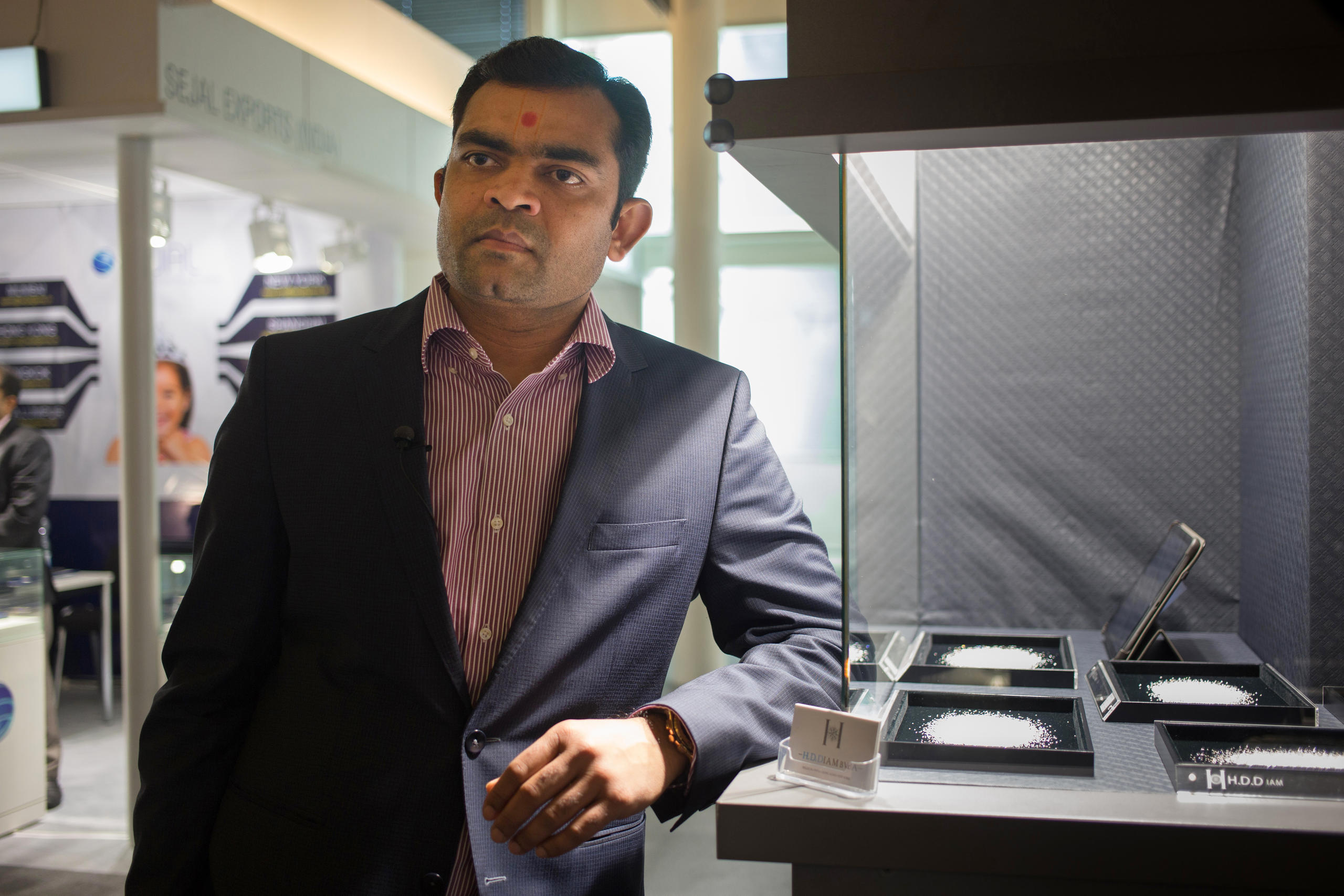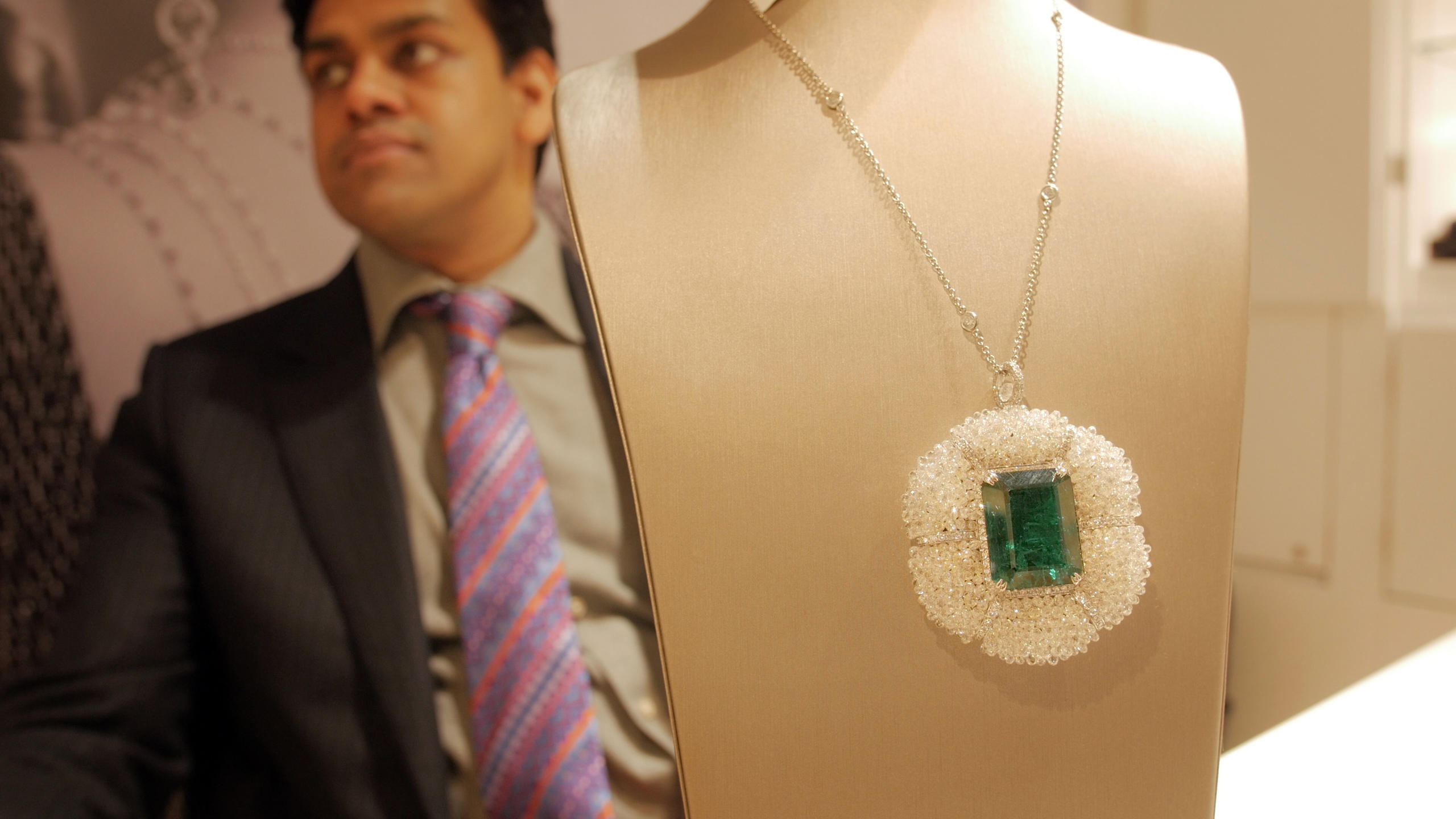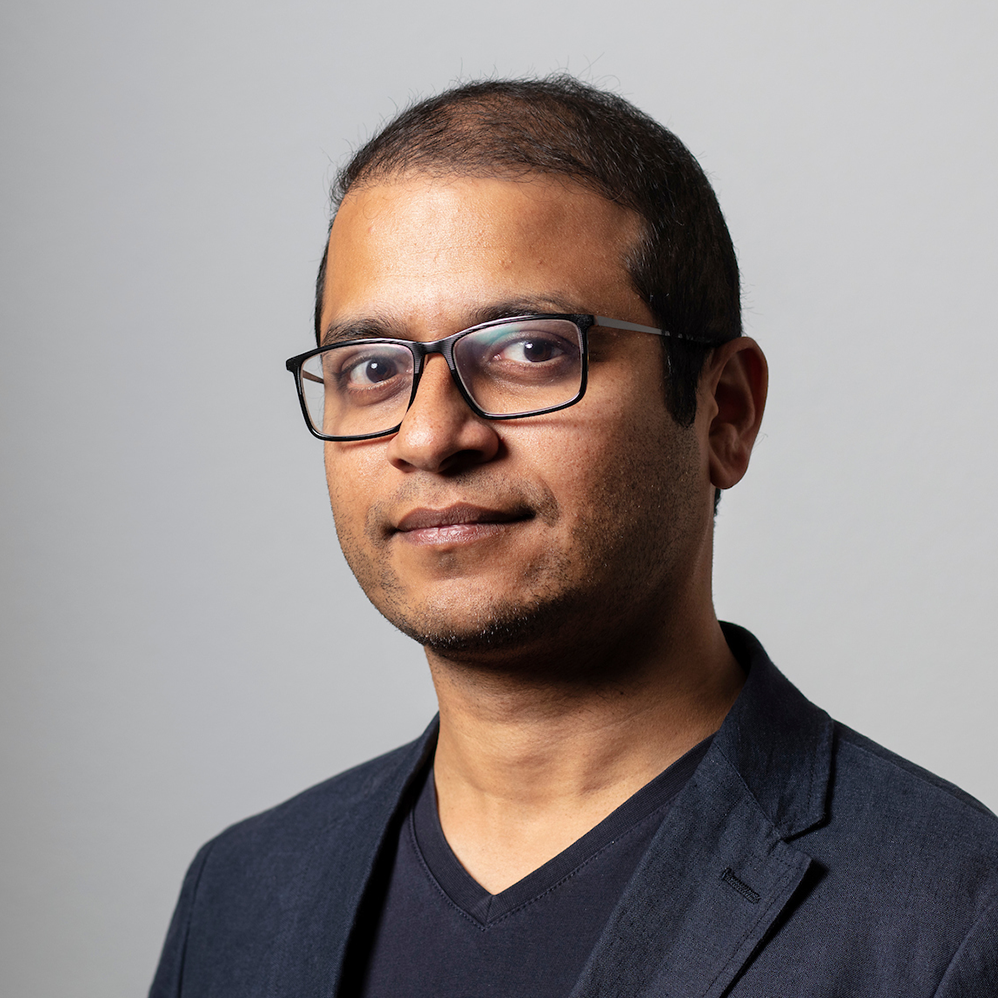
Indian jewel merchants take a shine to Baselworld

Away from the glitz and glamour of watch model launches by big Swiss brands, precious stones worth millions of dollars exchange hands at the Baselworld watch and jewellery fair. Indian gem dealers want a slice of the action too.
Strangely enough, it is hard to find the precious stones section at the world’s biggest fair of its kind. You’ll have to walk past the cavernous Hall 1 which hosts big hitting watch brands like Rolex and Omega and turn left before you reach Hall 2 where the smaller watch brands jostle for space. The discreet Hall 3 entrance is next to a temporary parking lot crammed with luxury cars like Lamborghinis, Maseratis and Rolls-Royces.
If you’re looking for gem stones, Hall 3 is the place to be. Not just in Baselworld, but anywhere in the world. Diamonds, emeralds, rubies and pearls seem to be growing out of display cases. Smartly dressed men and women are busy examining the wares on display and exchanging business cards.
Indian traders have a strong presence in the international crowd. Only Jewish traders from Antwerp appear to threaten their dominance. Around 30 stalls have been reserved for them by the Indian government, which negotiates with Baselworld to obtain favourable rental rates on their behalf.
“We are trying to position ourselves as one of the finest Indian brands selling modern jewellery,” Rishabh Tongya of Delhi-based jewellery brand Diacolor told swissinfo.ch. “Around 15 to 20% of the year’s business comes from Baselworld.”
Tongya’s pieces are aimed at modern royalty and nouveau oligarchs and range from $1,000 (CHF974.3) to more than $1 million. The Jaipur native has even roped in a real life princess – Princess Mriganka Singh of Kashmir – as a brand ambassador.
“Baselworld is not a place for the average high street Indian jeweller,” says Tongya. “It is more for those who want to enter the European market and are prepared for a gestation period in order to understand it first.”

More
Indian jewel merchants find their niche at Baselworld
Diamonds R Us
Most of the Indian traders at Baselworld are not jewellers. They specialise in sourcing precious stones for jewellery and watch brands. Diamonds are their specialty.
A typical example is Baselworld first timer Sunil Kumar Gupta who works for J.B and Brothers based out of Mumbai. The company sells around 65% of its stock online but felt that the time was ripe to reach out to clients with deeper pockets.
“We believe that the exhibition is not for selling the product but for marketing it,” says Gupta. “Here we are able to explain our online process to potential clients and they can see our product and buy online with confidence.”
Another diamond merchant on the prowl for big fish is Mayur Desai of the Mumbai-based HDE Group. His company specialises in processing tiny diamonds that are widely used in the watch industry to decorate watch dials.
“We process around 30,000 carats of such small diamonds every month,” says Desai. “We employ more than 40,000 workers in the state of Gujarat to polish and cut them.”
So far, demand for his product has not been good this year. He hopes to turn things around at Baselworld even though the first five days have been relatively quiet.
“We are hoping for more business as we have the same product that the watch and jewellery industry is using,” he says. “By working with us, the big brands can eliminate middlemen and reduce costs.”
Niche products
According to the Global Diamond Industry 2015 Report by consultancy firm Bain & Company, India now cuts and polishes more than 40% of rough diamonds over one carat. High-cost hubs like Belgium, Israel and the US, that traditionally handled high-end stones, are experiencing a decline in revenues as more and more large stone processing has migrated to India.
This trend is also reflected in the stock displayed in Indian stalls at Baselworld.
“Baselworld is one of the few markets where we can sell our premium stock like diamond solitaires five carats and above,” says Gupta. “We do not have any small diamonds on display here.”
Some of the stones in Gupta’s display case are worth in excess of $4 million.
Niche buyers at Baselworld are not just attracted by size but also by rarity. Purav Jogani of Mumbai-based Arihant Star is hoping to interest aficionados on the hunt for rare stones. His company specialises in natural fancy colour diamonds.
“Those who buys colour diamonds are connoisseurs as it means they are saturated with buying white diamonds,” he says. “Our clients are major retailers and designers looking for something different.”
According to him, the market for colour diamonds in India is still in its infancy. This means he is dependent on international fairs to find buyers for his unique stones.
“It is a high when you find someone who can take your polished stone and convert it into a piece of jewellery,” he says. “Baselworld is the best the world has to offer in terms of converting extraordinary stones into extraordinary jewellery.”
What is extraordinary is that despite advances in technology, very little has changed in the way business is conducted. Most of the companies behind the stalls are family-run businesses that have been in the trade for several generations. Most of the vendors are from the western Indian state of Gujarat and all share the same entrepreneurial spirit of their forefathers who embarked on long voyages to trade in precious gems.
“My grandfather used to go from Cambay on the western Indian coast to Burma to source stones, a journey that took two weeks by ship,” says Tongya. “Today you communicate via email but the business remains the same in the sense that you still get excited by the prospect of finding new stones.”

In compliance with the JTI standards
More: SWI swissinfo.ch certified by the Journalism Trust Initiative






























You can find an overview of ongoing debates with our journalists here . Please join us!
If you want to start a conversation about a topic raised in this article or want to report factual errors, email us at english@swissinfo.ch.